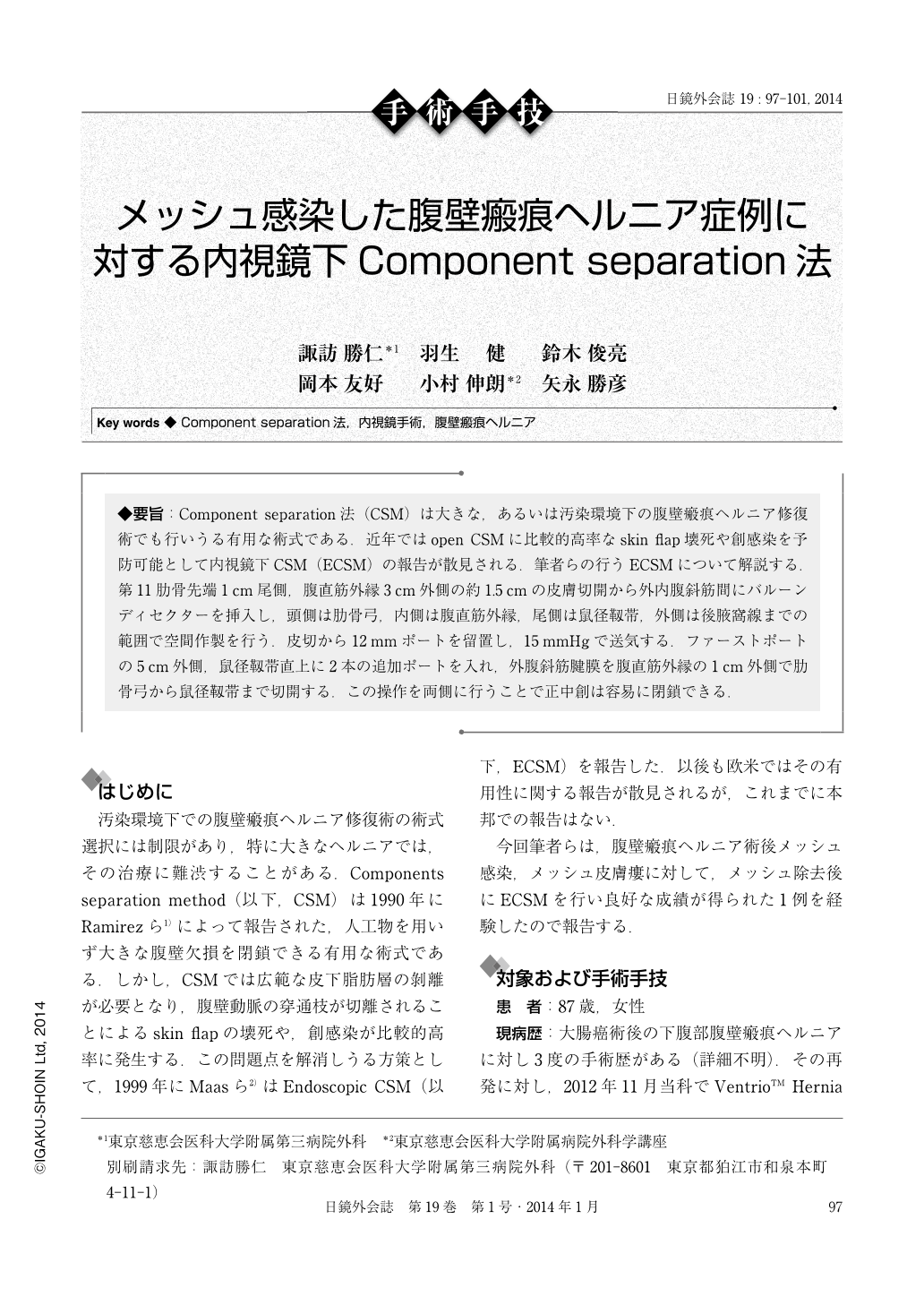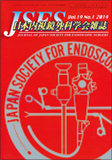Japanese
English
- 有料閲覧
- Abstract 文献概要
- 1ページ目 Look Inside
- 参考文献 Reference
◆要旨:Component separation法(CSM)は大きな,あるいは汚染環境下の腹壁瘢痕ヘルニア修復術でも行いうる有用な術式である.近年ではopen CSMに比較的高率なskin flap壊死や創感染を予防可能として内視鏡下CSM(ECSM)の報告が散見される.筆者らの行うECSMについて解説する.第11肋骨先端1cm尾側,腹直筋外縁3cm外側の約1.5cmの皮膚切開から外内腹斜筋間にバルーンディセクターを挿入し,頭側は肋骨弓,内側は腹直筋外縁,尾側は鼠径靱帯,外側は後腋窩線までの範囲で空間作製を行う.皮切から12mmポートを留置し,15mmHgで送気する.ファーストポートの5cm外側,鼠径靱帯直上に2本の追加ポートを入れ,外腹斜筋腱膜を腹直筋外縁の1cm外側で肋骨弓から鼠径靱帯まで切開する.この操作を両側に行うことで正中創は容易に閉鎖できる.
Component separation method(CSM) is an effective technique for incisional hernia repair even with large orifice or in contaminated environment. Recently, endoscopic CSM(ECSM) has been reported to be more effective than open CSM in terms of preventing skin flap necrosis or wound infection. We present a case of post-incisional herniorrhaphy mesh infection, which was successfully repaired by ECSM with simultaneous mesh extraction. Transverse incision, measuring 1.5cm, was made on the skin 1cm caudal to the tip of the 11th rib and 3cm lateral to the external edge of the rectus abdominis muscle. The external oblique muscle was separated bluntly to expose the surface of the internal oblique fascia. A balloon dissector was introduced into the space between external and internal oblique muscles. The balloon was then inflated to dissect both muscles. The cavity was made cranial to the costal arch, caudal to the inguinal ligament, medial to the lateral boarder of the rectus abdominis muscle, and lateral to the posterior axillary line. The balloon dissector was removed and replaced by a 10mm balloon-tipped trocar, and the newly created space was then insufflated with carbon dioxide to maintain intraluminal pressures of 15mmHg. Two additional trocars were placed into the cavity. The external oblique aponeurosis was then divided with electrocautery 1 cm lateral to the edge of the rectus abdominis muscle from the costal arch to the inguinal ligament. This procedure was then performed on the opposite side to achieve a complete component release, so that the midline abdominal wall defect could be easily closed.

Copyright © 2014, JAPAN SOCIETY FOR ENDOSCOPIC SURGERY All rights reserved.


